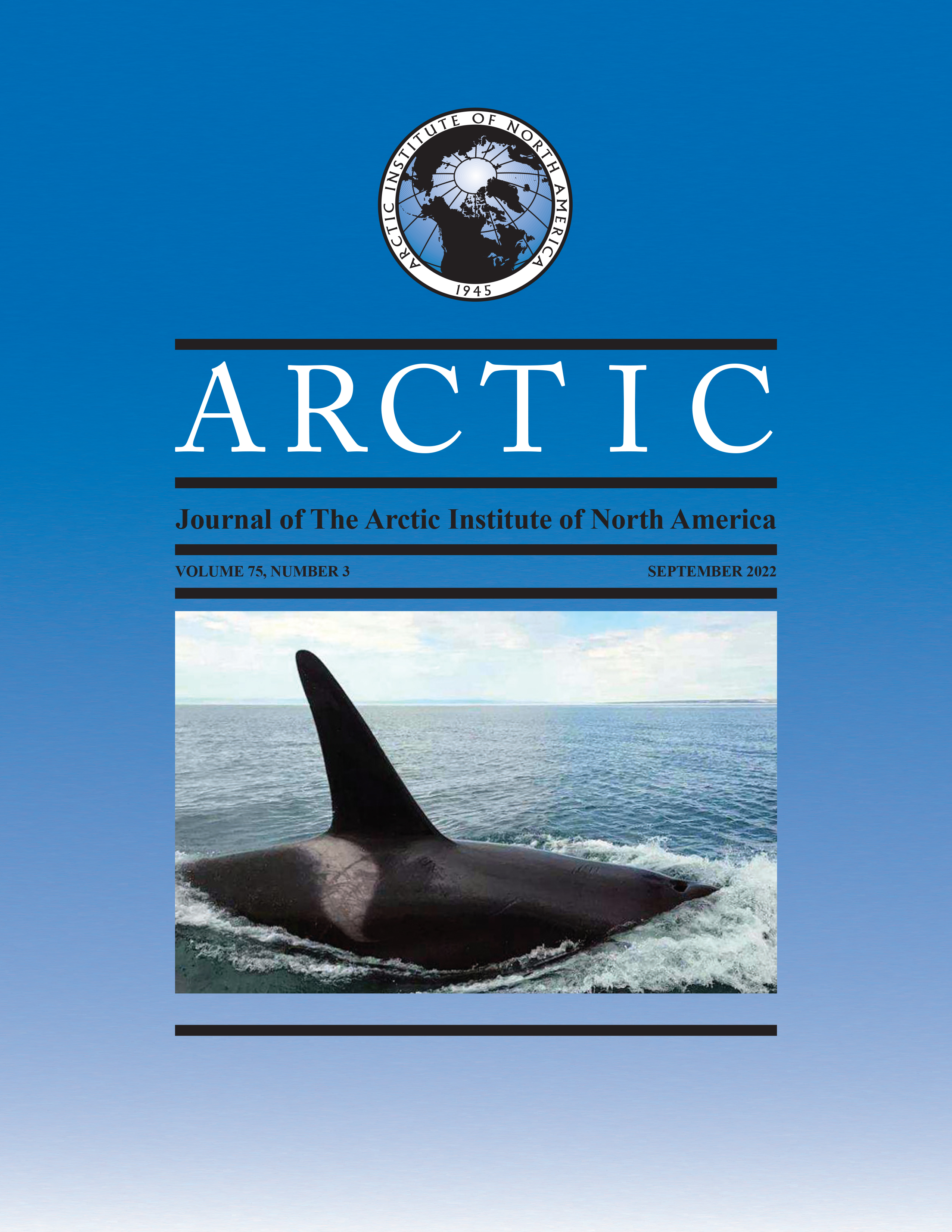Terrain Features and Architecture of Wolverine (Gulo gulo) Resting Burrows and Reproductive Dens on Arctic Tundra
DOI :
https://doi.org/10.14430/arctic75576Mots-clés :
burrow; Gulo gulo; reproductive den; resting site; river shelf ice; snow; subnivean; wolverineRésumé
Les espèces fouisseuses dépendent de lieux enfouis sous la terre et sous la neige pour satisfaire leurs importants processus de vie et de comportement, y compris l’évitement des prédateurs, la thermorégulation, le repos et la reproduction. Pour ces espèces, l’architecture des terriers peut avoir des effets sur la qualité et la réussite des processus, car des caractéristiques comme la largeur des tunnels et la profondeur des chambres influencent l’accès aux terriers par les prédateurs, l’isolation thermique et l’énergie dépensée pour creuser. L’hiver, les carcajous (Gulo gulo) qui vivent dans les environnements de la toundra de l’Arctique creusent des terriers dans la neige afin de s’en servir comme aires de repos et comme tanières de reproduction. Cependant, peu de descriptions de tels terriers ont été publiées. Nous avons visité 114 terriers de repos, puis nous avons décrit leurs caractéristiques architecturales et les structures connexes n’étant pas recouvertes de neige. Par ailleurs, nous décrivons les caractéristiques de 15 tanières de reproduction que nous avons visitées en hiver et en été. Même si de nombreux terriers de repos ont été uniquement creusés dans la neige, la plupart des terriers incorporaient des structures topographiques, dont des falaises, des talus, de la glace de banquise, des grottes thermokarstiques et des hautes berges de cours d’eau. En général, les terriers étaient composés d’un seul tunnel menant à une seule chambre, bien que certains avaient plusieurs entrées, des galeries, ou les deux. Les tunnels des aires de repos étaient moins longs que ceux des tanières de reproduction, et les chambres de repos étaient généralement situées dans la partie la plus profonde des terriers. Les tanières de reproduction étaient installées dans des caractéristiques topographiques où s’amoncelle la neige, comme les lits de cours d’eau, les hautes berges de lacs, les grottes thermokarstiques et les rochers. Il est essentiel de comprendre les caractéristiques des structures de repos et de reproduction des carcajous de l’Arctique afin d’être en mesure d’évaluer les incidences anthropiques au moment où le manteau neigeux subit des changements liés au climat.



